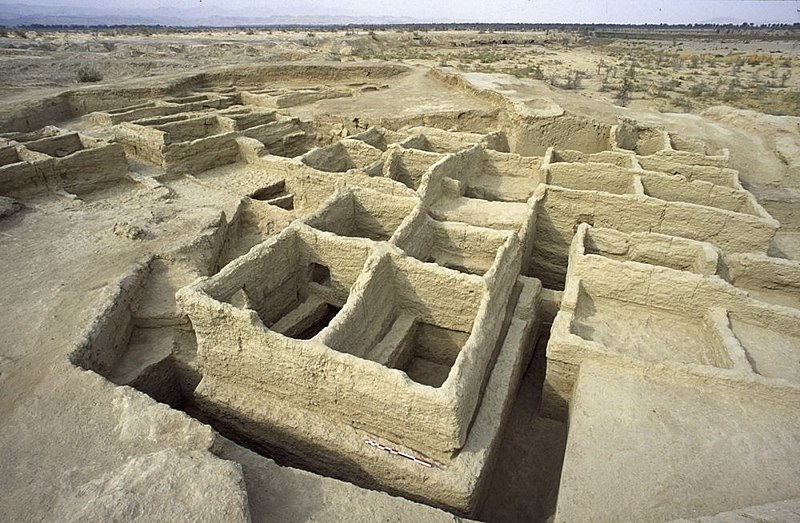Mehrgarh’s Agricultural History
Recent archaeological findings have transformed our understanding of Mehrgarh, one of South Asia’s earliest farming settlements. Previously dated to around 8000 BCE, new research suggests that its agricultural beginnings may actually date to between 5223 and 4914 BCE. This revelation challenges long-held beliefs regarding the origins of agriculture in the Indus Valley.
Mehrgarh
- Mehrgarh is a Neolithic (New Stone Age) archaeological site in Balochistan, Pakistan, on the Kacchi Plain.
- It lies near the Bolan Pass, west of the Indus River, between Quetta, Kalat, and Sibi.
- The site was discovered in 1974 by the French Archaeological Mission, led by archaeologists Jean-François Jarrige and Catherine Jarrige.
- Excavations took place from 1974 to 1986 and later from 1997 to 2000.
Revised Dating Techniques
Recent studies employed advanced radiocarbon dating techniques focusing on tooth enamel rather than charcoal. This method provides more reliable dates by avoiding contamination issues associated with charcoal. The new timeline indicates that Mehrgarh’s Neolithic layers formed rapidly, suggesting a dynamic lifestyle among its inhabitants.
Broader Implications for Agriculture
The findings imply that agriculture in South Asia did not develop independently. Instead, it likely spread from regions such as Iran or Central Asia. The previously accepted narrative of local innovation is now reconsidered. Mehrgarh may represent a later phase of agricultural diffusion rather than a pioneering site.
Impact
The new dates prompt a reevaluation of the Indus Valley Civilization’s origins. Previously thought to evolve from a continuous agricultural tradition beginning at Mehrgarh, the evidence now points to a more complex interaction with other regions. Archaeological parallels with Neolithic sites in southeastern Iran further support this idea.
Pottery Development Timeline
Interestingly, pottery at Mehrgarh did not appear until after 4650 BCE, which is later than in neighbouring regions. This delay raises questions about the cultural choices of the inhabitants. They had the knowledge and resources for pottery but opted not to manufacture it initially.
Exploration of Other Neolithic Sites
The new findings also highlight the need to explore other Neolithic sites in the region. Sites in eastern Rajasthan, Haryana, and the Vindhya hills may hold evidence of early agricultural practices. This broadens the scope of agricultural history in South Asia beyond just Mehrgarh.
Future Directions for Research
The study of Mehrgarh opens avenues for further archaeological investigation. Comprehensive research into other sites may reveal additional vital information about how agriculture spread across the subcontinent. Understanding these connections will enhance our knowledge of early human societies in South Asia.
Month: Current Affairs - April, 2025
Category: Science & Technology Current Affairs








